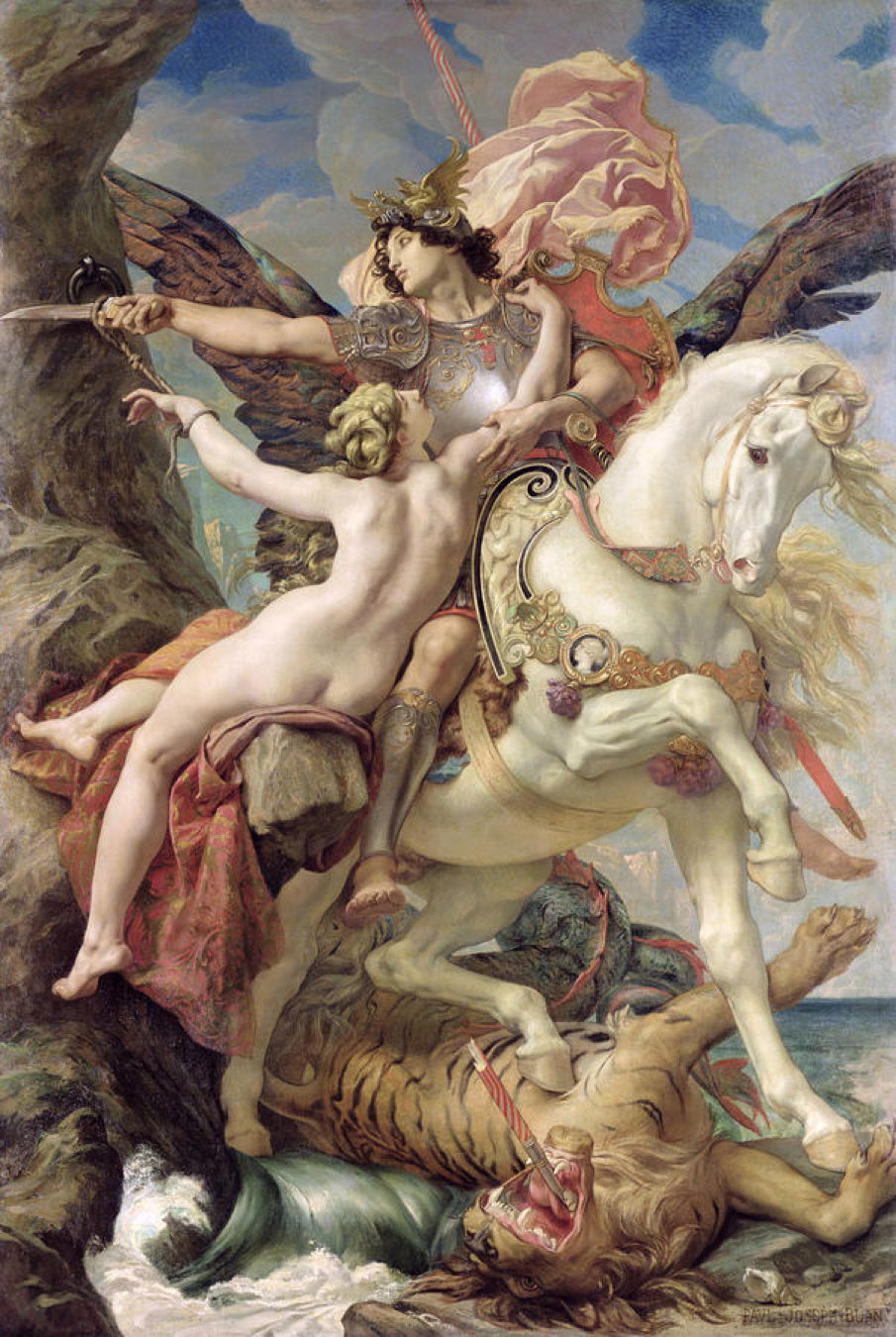Ruggiero, flying on the hippogriff, has just discovered Angelica, who is chained naked to a rock to await the arrival of the sea orc and her death.
Ruggiero lands by her, and immediately thinks of his beloved Bradamante. Angelica feels her nakedness, and blushes with shame from head to toe, unable even to hide her face from him. As she tries in vain to speak, there is the roaring sound of the orc approaching. As soon as it’s close enough, the knight strikes it between the eyes with his lance, but fails to pierce its armoured skin.
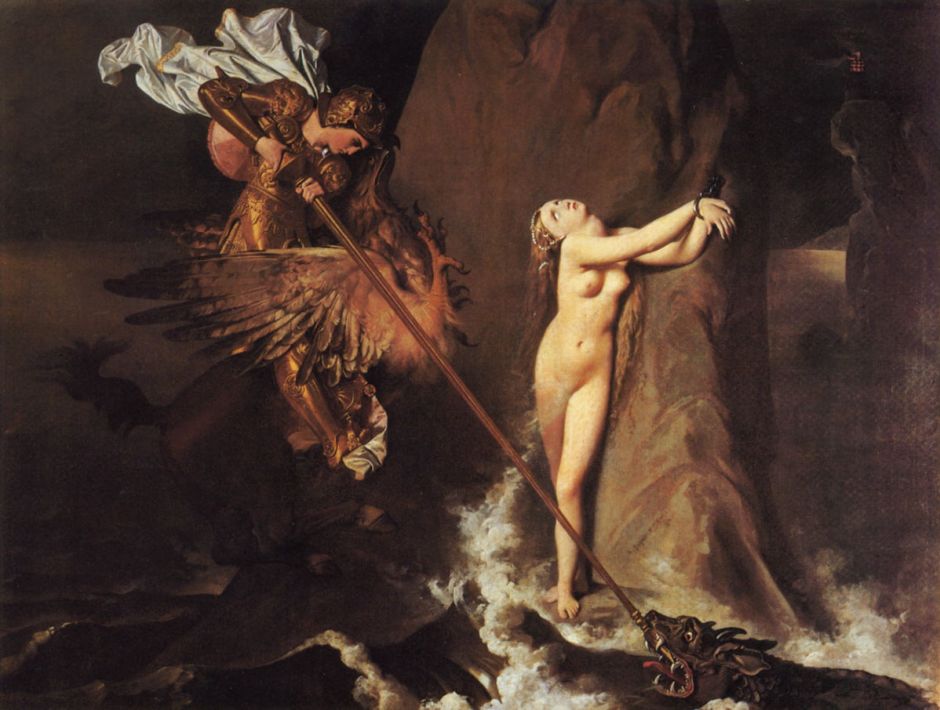
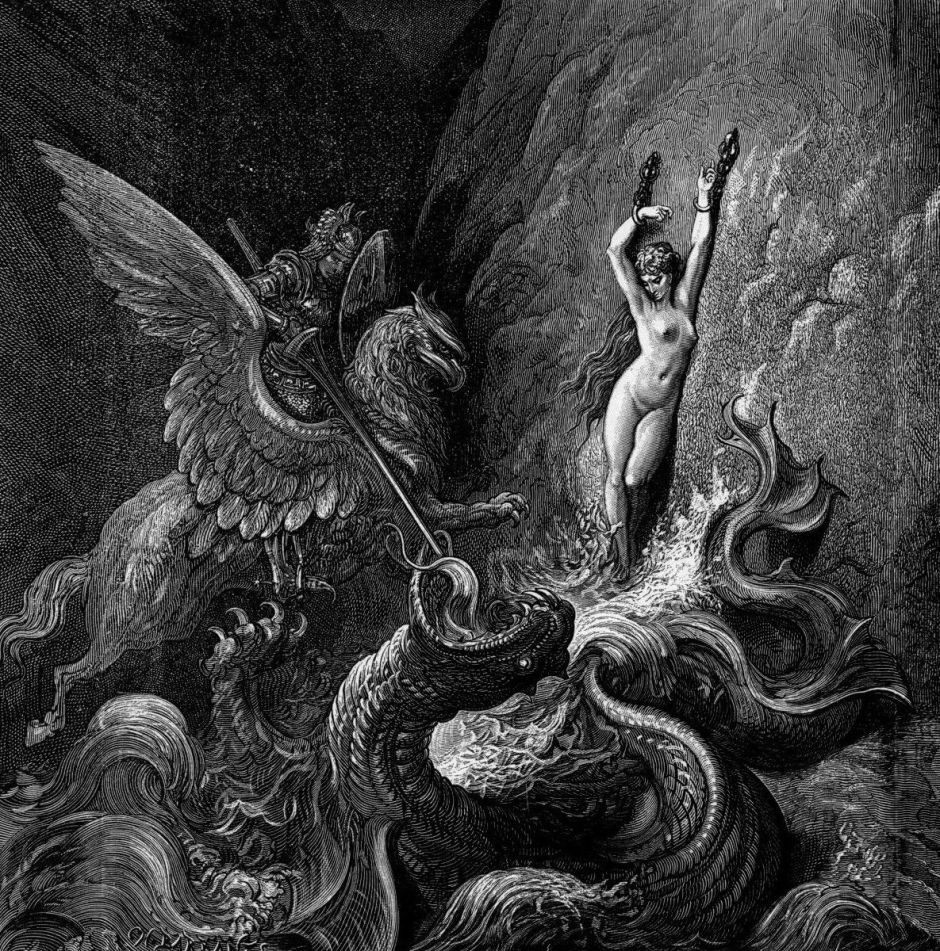
He tries a second time, and the orc tries to escape. Ruggiero strikes it again and again without wounding it in the slightest. The orc’s thrashing about in the sea drenches the knight and his hippogriff, soaking the horse’s wings and putting at risk further flight. Ruggiero therefore decides to use his magic shield on the orc, but to protect Angelica first slips his magic ring onto her finger.
The burningly intense light from the shield stops the orc in its tracks, and renders it unconscious.

Ruggiero frees Angelica, and the two of them fly away on the back of the hippogriff, leaving the orc to recover.
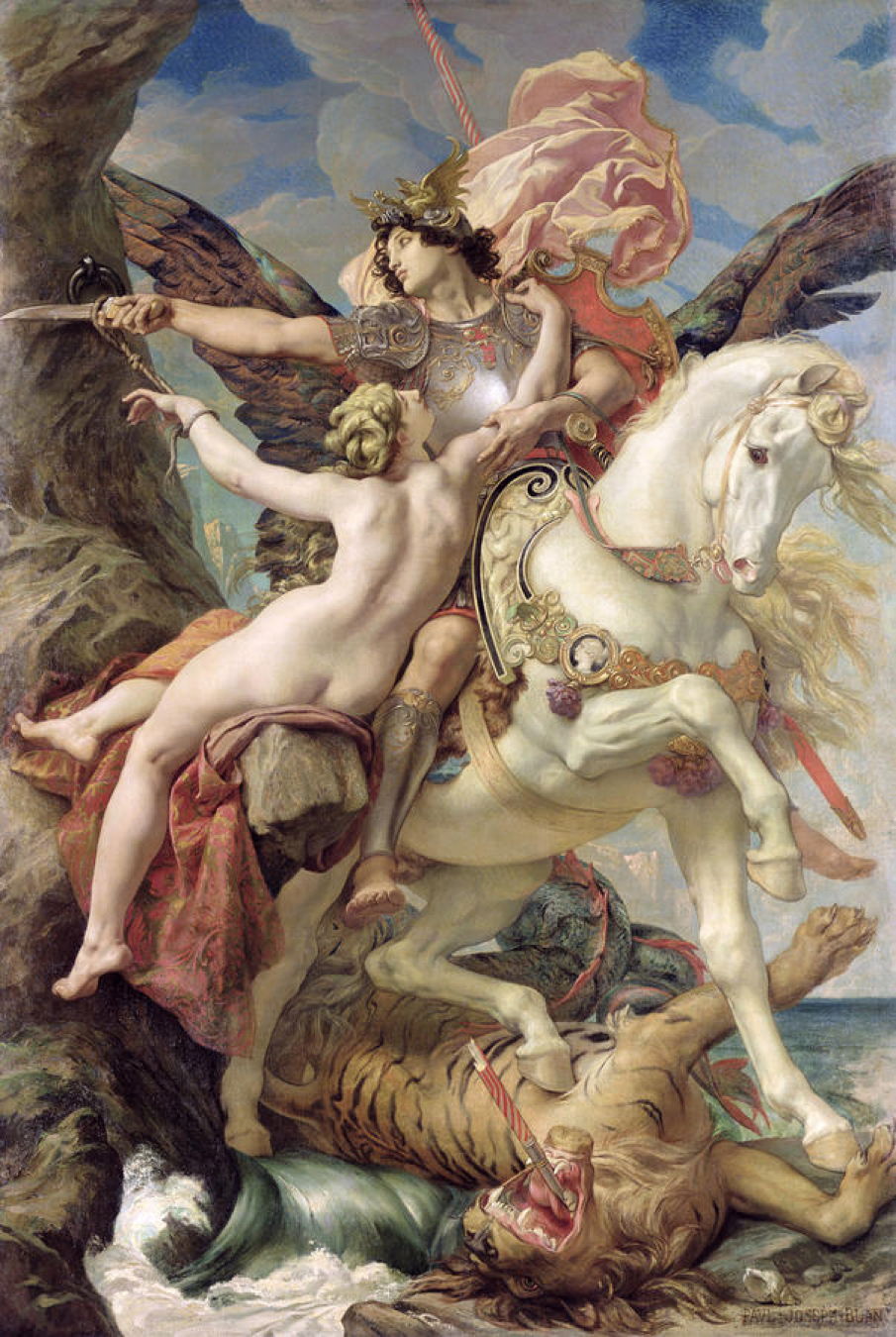
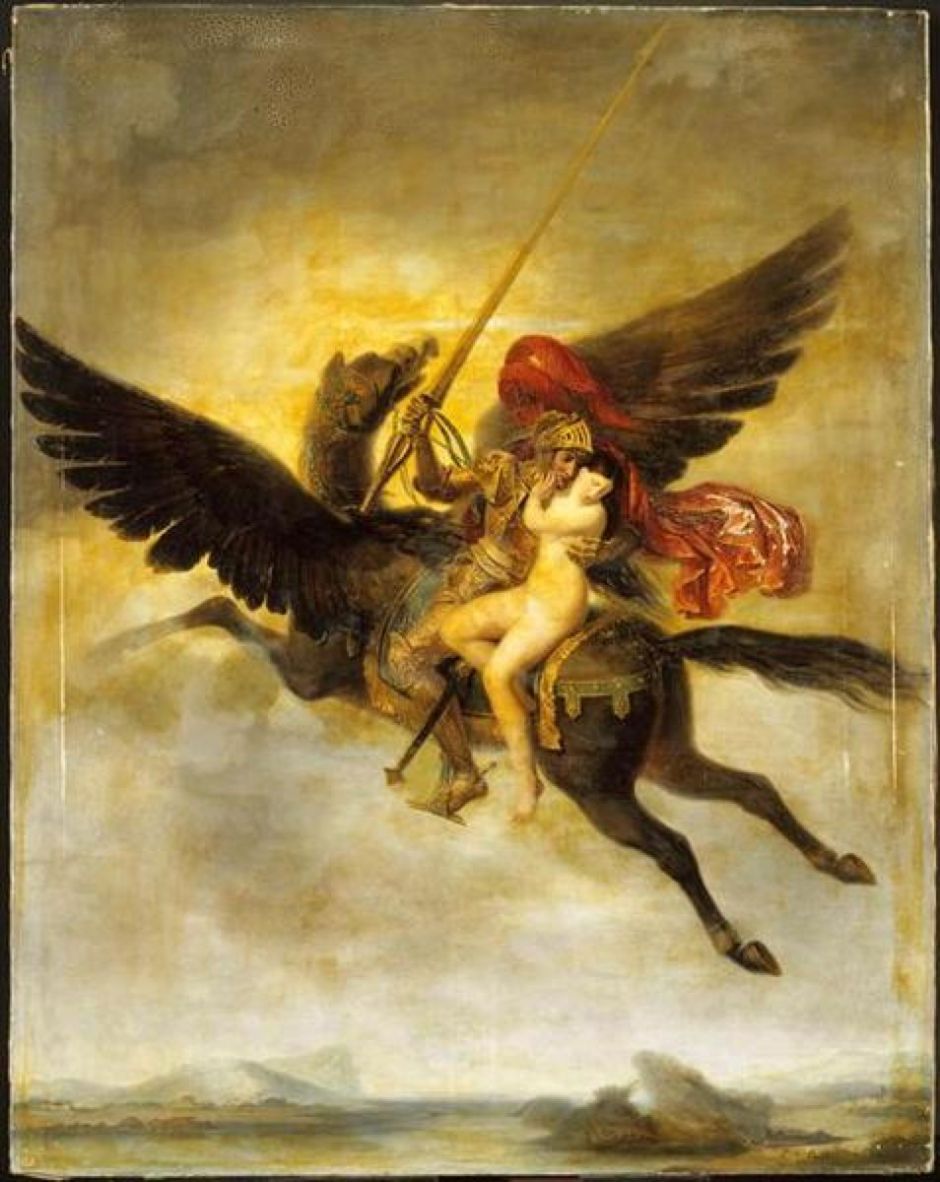
They fly to Brittany, where they land in the middle of some oak trees. Here, Ruggiero is overcome by desire for Angelica, and hastily strips off his armour. Angelica remembers her magic ring, and the journey that she had taken it on. As the knight is getting a bit too bold for her, she pops the ring in her mouth, and promptly becomes invisible.
At first, Ruggiero is baffled, but then realises what Angelica has done. He calls on her to reappear, and gropes his way around a nearby fountain in the hope that he will find her. She has, of course, run away and finds a cave in which to hide from him. Here a herdsman had been living, and there are stocks of food and clothing. After a rest, Angelica dresses in those country garments made from coarse wool. She decides to find herself a horse and travel to the east.
Ruggiero realises that she has given him the slip, and goes to ride off on the hippogriff. But the winged horse has slipped its bit and is flying around high above him. He has now lost his mount, and the magic ring which had been given to him by Bradamante to protect him from evil spells and magic. He puts his armour back on and heads inland, dejected and despondent. As he enters a wood, he hears the noise of battle between a giant and a valiant knight.
As Ruggiero watches and wonders whether to go to the aid of the knight, the giant fells his opponent with a heavy blow from his cudgel, and leaves them stunned on the ground. When the giant goes to deliver the coup de grace, he removes the knight’s helmet: to Ruggiero’s horror, the giant is about to kill his beloved Bradamante. Ruggiero rushes at the giant with his sword, but he has had enough of fighting, so picks up Bradamante and runs off with her over his shoulder. The knight gives chase.
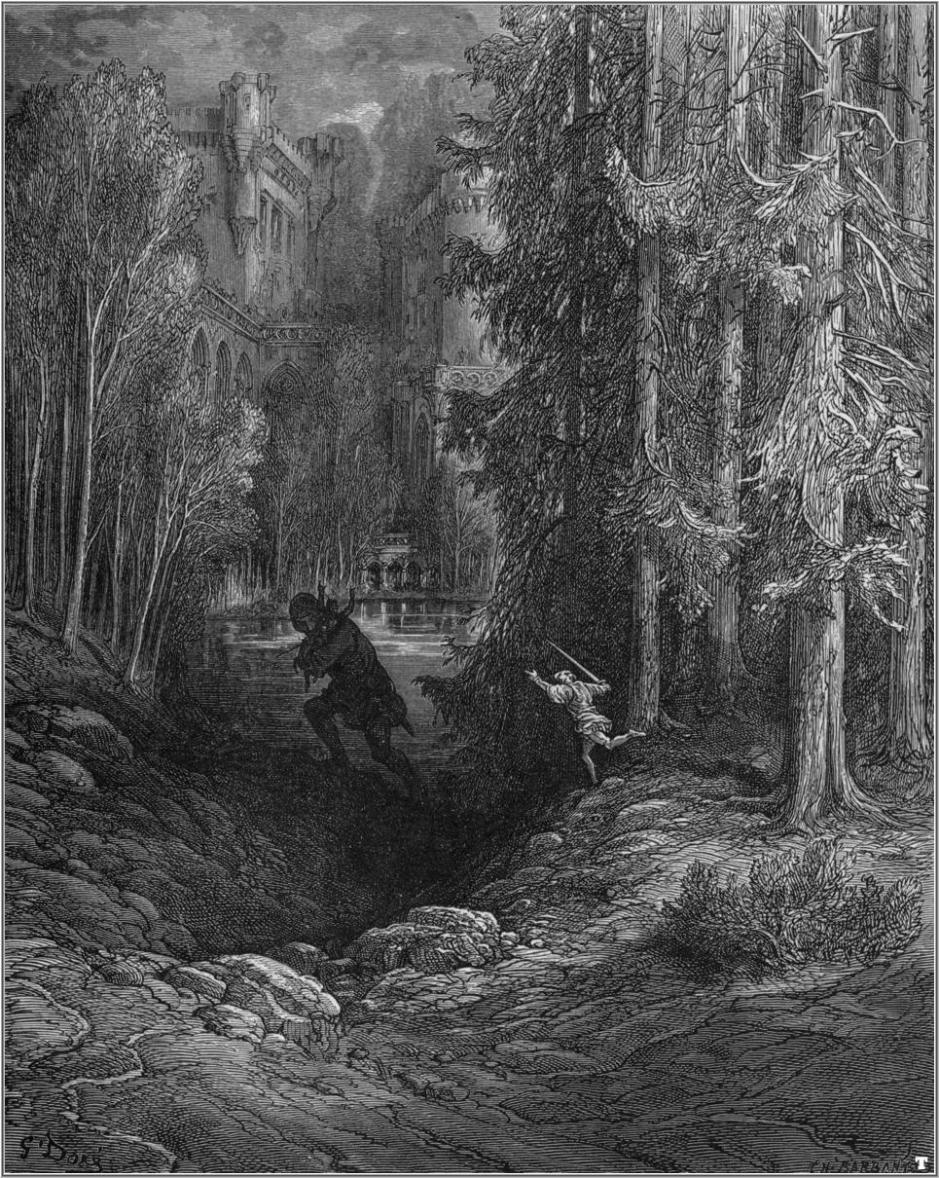
Before catching up with Orlando’s progress, Ariosto reminds us that he had thrown the gun which had killed his horse into the sea. The author condemns firearms as hellish and hideous inventions which take all honour from combat.
Orlando has been heading by sea to the island of Ebuda, in quest of saving women who are to be fed to the orc. His journey has been frustrating because of the weather, which sometimes prevents him from making any headway at all. When they finally reach the island, Orlando rows ashore in a boat, ordering the skipper of his ship to wait for him offshore. The knight takes with him the largest anchor from the ship, with which to tackle the monster.
As he rows towards the shore, Orlando sees a naked woman tied to a tree at the water’s edge. There follows a dreadful roaring sound and the orc suddenly appears. Orlando puts his boat between the orc and the woman, and as the orc approaches, its mouth opened wide to swallow the knight and his boat whole, Orlando throws the anchor inside the orc’s cavernous mouth. It lodges there, stuck against the monster’s palate and tongue, locking its jaws open.
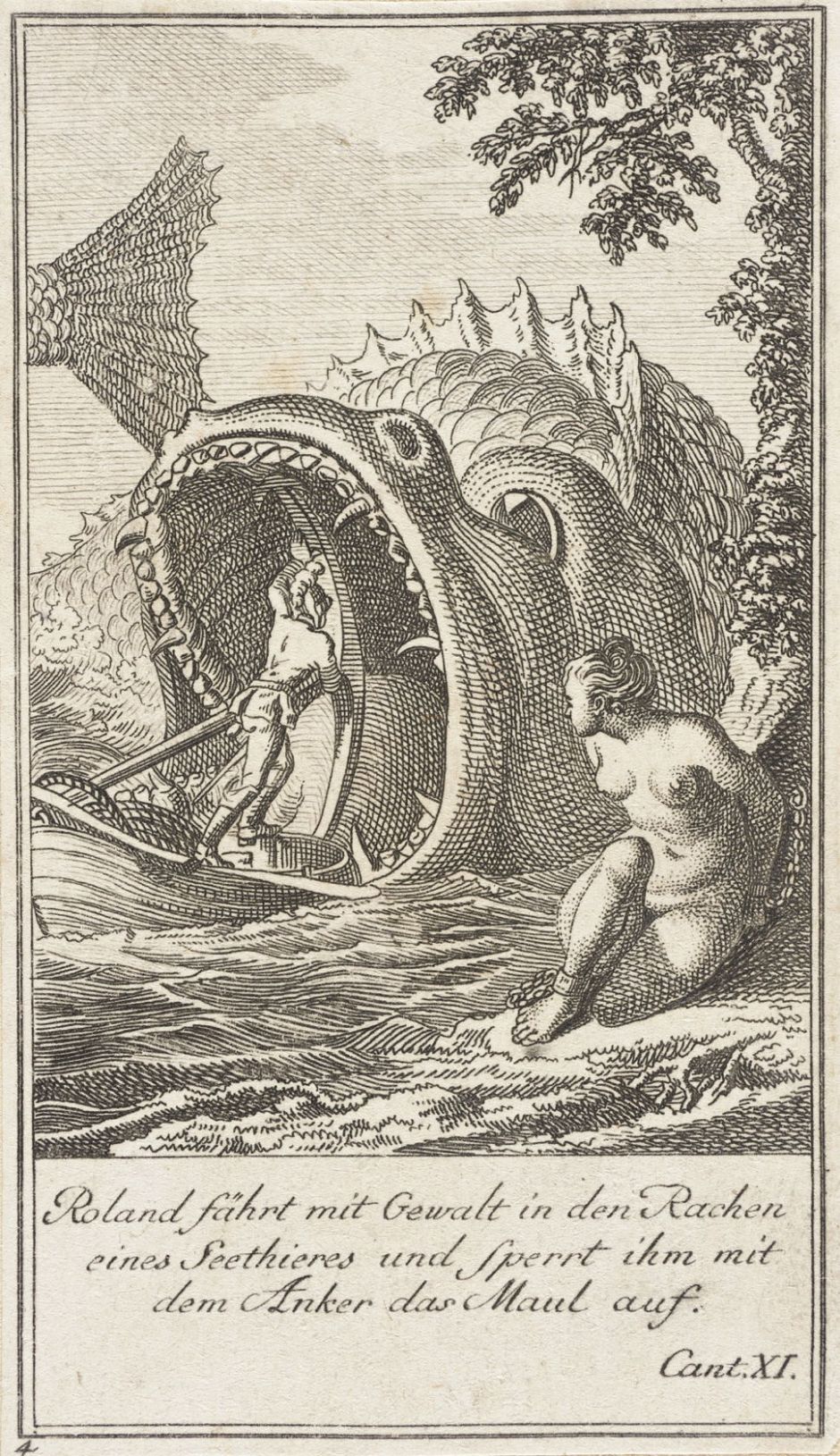
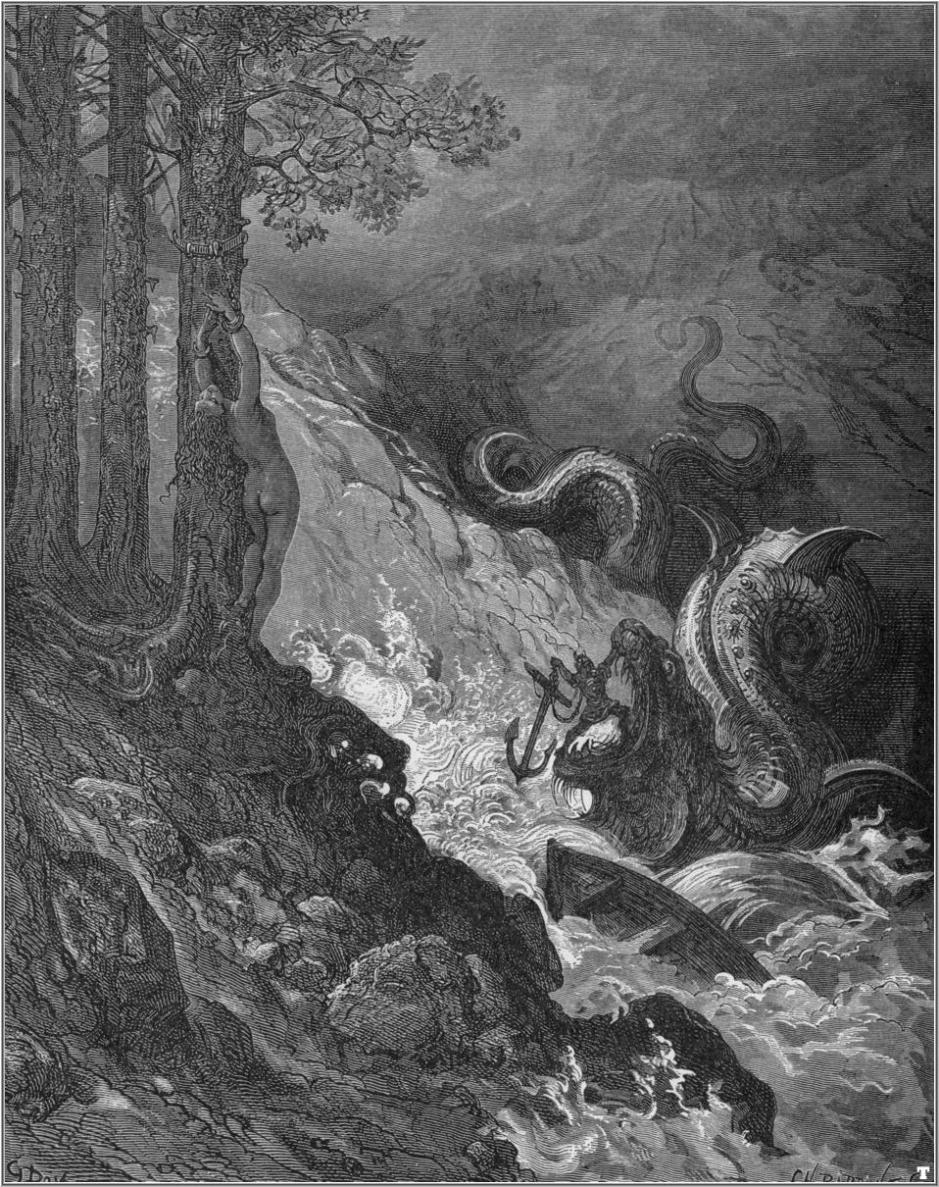
The knight enters the mouth of the orc and hacks at it with his sword. The orc tries to vomit him out, but can’t. It tries to swim, but is growing weaker with the wounds inflicted by Orlando. The knight hops out and starts dragging the monster to shore. Its mouth is bleeding so badly now that the waters here have turned red.
The roars of the suffering orc wake Proteus, who flees to Ethiopia, leaving his entourage of Nereids, Tritons, and others to disperse. The orc finally dies just before Orlando pulls it out of the water onto land.
These two encounters with the orc are often confused, which isn’t helped by their similarities with the myth of Perseus and Andromeda.
The first combat with the orc is conducted by Ruggiero to save the naked Angelica, who is chained to a rock. Ruggiero arrives on the winged hippogriff, and departs with Angelica riding pillion, leaving the orc unwounded but senseless from the magic shield.
The second combat is conducted by Orlando from a rowing boat to save the naked Olimpia, who is tied to a tree. Orlando arrives in a rowing boat, and doesn’t depart with Olimpia until after another adventure. They leave the orc on the beach, an anchor wedged in its jaws, completely dead after being badly wounded in its mouth.
Principal Characters
Angelica, beautiful daughter of the ruler of Cathay, who is loved and pursued by innumerable knights both Christian and not.
Bradamante, Rinaldo’s sister, “the celebrated Maid”, a brave Christian knight who is the equal of her brother. She is loved by Ruggiero.
Charlemagne, Charles the Great, Christian King of France.
Olimpia, daughter of the Count of Holland, and wife of the unfaithful Bireno.
Orlando, the hero, Charlemagne’s nephew and his most outstanding paladin.
Ruggiero, son of the King of Reggio, a non-Christian knight who is in love with Bradamante.
The artists
Daniel Berger (1744-1825) was a German engraver who was sufficiently eminent to be appointed professor of the Prussian Academy of Arts.
Paul-Joseph Blanc (1846-1904) was a French history painter who studied at the École des Beaux-Arts in Paris, spending time there as a pupil of Alexandre Cabanel. He won the Prix de Rome in 1867, and became a professor at the École himself in 1889. In addition to easel paintings and portraits, he painted murals of old French history in major Paris buildings, including the Panthéon and the Hôtel de Ville (City Hall).
Arnold Böcklin (1827–1901) was a Swiss symbolist and mythological painter who trained at the Düsseldorf Academy, and worked in Italy, Switzerland (Basel and Zurich), and Germany (Munich). I have recently written two articles about his symbolist paintings, and have also looked at his narrative works.
Gustave Doré (1832–1883) was the leading French illustrator of the nineteenth century, whose paintings are still relatively unknown. Having produced large sets of illustrations for classics such as Dante’s Divine Comedy earlier in his career, he started work on a set for Ariosto’s Orlando Furioso in the late 1870s, for publication in 1879. These are the last major illustrations which he made. This article looks at his paintings.
Jean Auguste Dominique Ingres (1780–1867) was a major French painter in Neoclassical style, best known for his history and other narrative paintings. He was a pupil of Jacques-Louis David, and continued much in his tradition, and in opposition to the more Romantic painting of Eugène Delacroix. His work extended from portraits to Orientalism. He painted a group of works centred on this section of Orlando Furioso, at least two showing Angelica chained naked to a rock, and another two or more showing her rescue. The painting shown above was exhibited at the Salon of 1819.
Louis-Édouard Rioult (1790–1855) was a French painter in Romantic style, who worked in Paris and was a friend of Théophile Gautier. Many of his paintings are now in the Versailles Palace, but little seems to be known about his career.
References
Wikipedia on Ariosto
Wikipedia on Orlando Furioso
Barbara Reynolds (translator) (1975, 1977) Orlando Furioso, parts 1 and 2, Penguin. ISBNs 978 0 140 44311 0, 978 0 140 44310 3. Verse translation with extensive introduction and notes.
Guido Waldman (translator) (1974) Orlando Furioso, Oxford World’s Classics. ISBN 978 0 19 954038 9. Prose translation.

